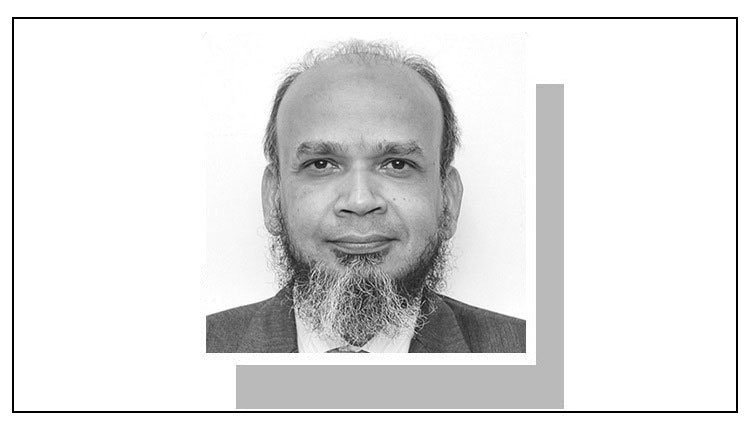Imbalance from birth ….Riaz Riazuddin
WHY are there significantly more men than women in our population? While the gender-wise population has not yet been released by the Pakistan Bureau of Statistics for the latest digital census of 2023, we can use the sex ratio (number of males per 100 females) of 105 men per 100 women reported in the 2017 census to estimate the population of men and women in 2023.
Pakistan’s population in 2023 is 241.5 million, of which 123.7m are estimated to be males and 117.8m females, implying that there are 5.9m more men than women. This seems perplexing because women’s life expectancy is higher than men’s in Pakistan and elsewhere. Yet, men also outnumber women in the total global population. According to the UN Demographic Yearbook 2020, there are 101.7 men per 100 women in the global population.
There were 65m more men than women in the 2020 world population figure of 7.8 billion. Even a slightly unequal global sex ratio results in a large absolute number. Demographic researchers cite three reasons why the sex ratio in populations varies and is seldom equal.
The first is the difference between male and female life expectancy and mortality rates. Second is the difference in the sex ratio at birth, ie, the ratio between the number of newborn males and females. The third reason is the migration of male labour. These are the reasons why there are more males than females in some countries while the reverse is true for others. All the three reasons depend, in turn, on a complex mix of biological, cultural, anthropological, public health, technological, wars, pandemics, and economic forces.
Life expectancy, and especially, the difference between female and male life expectancy of a country is an important determinant of the sex ratio. For example, in Russia, male life expectancy was only 64.2 years compared to 74.8 years for women in 2021 — a gap of 10.6 years. Like Russia, male life expectancy in several East European countries is much lower, with higher gaps compared to other developed countries in the West.
The reason for this: high consumption of vodka and other forms of alcohol. According to research in The Lancet, death rates for men in Russia are higher than for women due to high vodka consumption by the former.
There were 65m more men than women in the 2020 world population figure of 7.8bn.
The public policy of restricting alcohol consumption by Mikhail Gorbachev in 1985 resulted in a 25 per cent drop in drinking and death rates for men, increasing their life expectancy in later years, but the collapse of the Soviet Union in 1991 was followed by a surge in alcohol consumption and reduction in male life expectancy.
This indicates that public policies, including economic policies, if formulated and implemented appropriately, have the power to change habits and culture. Russia had a sex ratio of 86 men for 100 women in its population in 2021, one of the lowest in the world. This also shows that the sex ratio does not correlate well with the extent of human and other development in a country.
Even more surprising and shocking are the reasons for high sex ratios (more men than women) in some other countries, as in China and India whose combined population accounts for over a third of the world population. The main reasons are high sex ratios at birth. The introduction of the one-child policy in China in 1979 was followed by a rise in the sex ratio at birth from 107 to as high as 117.8 in 2004.
While this policy was credited with containing 400m births it resulted in many negative consequences, including the abandonment of infant girls, some of whom died, creating a generation of ‘missing women’. Nobel laureate Amartya Sen pointed out in 1990: “The numbers of ‘missing women’ in relation to the numbers that could be expected if men and women received similar care in health, medicine, and nutrition, are remarkably large. A great many more than 100m women are simply not there because women are neglected compared with men.”
In India, the sex ratio at birth rose from 105.5 in 1970 to 109.6 in 2010. According to the WHO, the ‘expected’ sex ratio at birth should be close to 105 boys per 100 girls in the absence of gender discrimination. Because of this biological reason, in all countries there are more male than female births, including in Russia and Eastern Europe. Higher ratios may indicate the presence of gender discrimination.
Sex ratios at birth higher than 107 indicates the presence of prenatal or postnatal sex selection. The former can occur on ascertaining the gender of the unborn child and aborting the female foetus. The latter occurs due to the premature death of girls because of maltreatment, neglect, or unequal treatment. This can happen in countries that have a strong culture of preferring sons over daughters.
Researchers in India and South Korea have noticed some perplexing facts in correlating sex ratio with income and education. For example, in north India, the higher castes (who tend to be richer) had more skewed sex ratios than the lower castes. Further research in India and South Korea suggested that richer families show greater discrimination: higher-income households are more aware and have access to sex identification technology, which they make use of for prenatal gender determination. Poor households cannot afford access to this medical technology. Higher-income households usually have higher education. This is one of the reasons that the sex ratio does not correlate well with human development.
Pakistan’s sex ratio at birth, according to UN demographic statistics, was at 105.6, close to the level explained by biological reasons. The sex ratio at birth rose from 106.1 in 1970 to 108.1 in 2001, indicating the presence of the same kind of gender discrimination as in India, though of lesser intensity.
Sex ratio at birth later declined to 105.5 in 2021, lower than that of India at 107.7. The history of sex ratio at birth sadly shows that the seeds of gender discrimination may be sown even before the birth of girls in countries and regions with an entrenched culture of son preference.
Although these regions mainly include East and South Asia, the Middle East, and North Africa, the preference for a son and gender discrimination can, unfortunately, be seen globally.
The writer is a former deputy governor of the State Bank of Pakistan.
rriazuddin@gmail.com
Courtesy Dawn, January 27th, 2024












